Fence in the country - the thing is necessary. He will close a plot from a curious eye, outlines the borders of the territory, emphasizes the overall style of the garden and give it a neat and neat appearance. You can build a fence from wood, metal, stone, plastic, vines and many other materials.
Features of the installation of the fence in the country area
The design of any fence includes bearing supports and trim. Bearing supports often perform vertical poles and horizontal spans, which is mounted for the casing material, as well as the gate and gate.
Before creating a fence around its garden, you need to learn some rules and subtleties:
- According to the construction standards and rules, fences between two neighboring sites should not exceed 1.5 m in height, and should not be deaf. This means that a continuous fence without gaps can be built only from the sides of the garden that go out or adjoin the road.
- Choosing a view of the country's fence and building materials for its execution, you need to take into account the type of soil on the plot. It will depend on the density and other characteristics of the soil, its ability to keep the structural supports, and therefore the foundation for the fence will also be selected taking into account this feature.
- Another important indicator is a wind load on the fence. In an open and highly thoughtable area, the wind load on the fence will be significant, so the casing and supports should be strong and reliable. In such conditions, it is recommended to separate fences rarely, leaving the gaps, as well as create a powerful and well-beaten foundation.
- The style of the garden also plays a role when choosing a fence, because the fence should fit into the overall design, emphasize its features and beauty.
- Sometimes the height of the fence closes the overview and does not allow to see what is happening outside. In this case, you should take care of the installation of the video surveillance system.
Selection of material for building fence
For the construction of a country fence with their own hands, a lot of materials are suitable. Consider more of their characteristics, advantages and disadvantages.
Cheap, affordable and beautiful material is wood, we will tell about its positive characteristics further:
- Build a wooden fence is quite simple and can do it yourself without resorting to the help of special equipment and masters.
- Wood is relatively low weight and does not require the creation of a massive foundation. Small weight also facilitates the installation process of such a trim.
- The deaf fence made of wood well protects the plot from dust, noise and curious views from the street.
- Wood eco-friendly, harmless, looks natural and aesthetically. It is easy to work with it, creating original decorative details.
- The solid covering perfectly protects against the wind, sparse - reduces the speed of the air flow.
- A tree can be combined with other materials: metal, brick, natural stone.
In addition to positive qualities, there is also disadvantages:
- Flavoring is one of the main mines of the material.
- The tree absorbs moisture well, so the fence will require regular care. It will have to process with special impregnations from time to time, paint or varnish.
- Insect pests love to be tolding wood, because of what it comes into disrepair. Antiseptics will help protect the fence from parasites.
- Wooden fence is not too durable, the average life of its service does not exceed 10 years. From the frequent alternation of heat and cold, the material is destroyed, cracks, loses its attractiveness.
Popular species of country fences are metal fences. Customs or Rabita are often used as a sheat. The positive qualities of the fence from the Rabita include such:
- Ease of installation. Working with the grid is easy, it weighs little, it cuts into the desired fragments without problems. Make such a fence will not be difficult, moreover, the large area of \u200b\u200bthe Rabita makes it possible to prevent a fairly rapid territory.
- Metal grid is more durable wood and will serve at least 20 years.
- Such a fence is well transmitted by sunlight, but prevents the penetration into the animal site.
- Metal does not burn, which can also be considered a plus.
Among the shortcomings of the Rabitsa can be allocated as:
- The grid does not protect the plot from noise, dust, wind and outsiders. But you can partially solve this problem if you put on the inside of the fence of the plant.
- Rabita will not protect your home from the penetration of intruders.
- Over time, the metal may rust, especially if it is not galvanized, is not painted and is not protected by PVC layer.
- Galvanized grid is a danger to the environment, since the layer of zinc is gradually washed off with rains and absorbed into the soil.
- A poor-quality polyvinyl chloride coating poorly tolerates temperature fluctuations and comes in disrepair after a few seasons.
Another popular view of a metal fence is a sectional fence. It has quite a lot of advantages, among which can be called:
- The duration of operation, which is at least 15-20 years.
- High strength, hardness, resistance to shock loads, endurance before temperature fluctuations.
- Good light permeability, the ability to protect the plot from animals and unreasonable unreasted persons.
- Fire safety.
- Variety of species, shapes, designs.
Sectional metal fences are not devoid of flaws:
- They do not protect the plot from dust, noise, strong wind, are clearly visible from the street, so any passing by can look into the courtyard.
- The metal needs to be processed, since it is subject to corrosion under the influence of moisture and water.
- Installing such a fence is not the lungs, it requires welding skills and the presence of certain tools and devices.
A prestigious and expensive type of metal fence is considered a fence. It has almost the same operational characteristics as other metal fences: strength, long service life, hardness, traffic frequency, nonseasing, the ability to protect the area from animals and intruders. But its aesthetic and high decorativeness is considered the main advantage of the forged fence. Such a fence emphasizes the status and prestige of the host of the house, its welfare. It is worth a similar fence quite expensive, requires a professional installation, does not protect the territory from noise and street dust, as well as over time is subject to corrosion.
Reliable and one of the most durable is the stone fence. It is characterized by such positive qualities:
- Durability, the service life of the stone fence exceeds 50 years.
- Good strength characteristics, since the stone is considered one of the most solid building materials. It is not afraid of frost and heat, with ease tolerate temperature fluctuations.
- The stone does not destroy from the impact of moisture, therefore does not require any special protection.
- This material is environmentally friendly, safe for health, not a fuel.
- A variety of species and shades of stones - the cause of their high decorativeness. Stone fence can be fixed almost in any stylistic design of the garden, moreover, the material is well combined with wood and metal.
- The fencing from the stone reliably protect the household plot from noise, dust, wind. You will not look into the courtyard passing by people, and even the attackers are unlikely to overcome such protection.
Stone fences have some minor cons:
- The severity of the material suggests that under such a fence will have to lay a powerful and deep foundation.
- Work on the installation of a stone fence is performed for a long time, requires significant physical effort. Put such a fence alone problematic.
- Stone fence will cost its owner not so cheap. Massive foundation, materials for the very fear, the costs of their transportation and the possible assistance of hired workers will require investments of considerable money.
Cate fences with their own hands, photo:
Construction of dacha fence with their own hands
Wing: Rustic Style Romance
The woven from the vine on the summer site looks very colorful, so that in recent years he has won considerable popularity. Despite the seeming difficulty, creating such an elevation itself is not only realistic, but not too hard. The text design includes wooden supports, the space between which is filled with rods. As a support, it is possible to use bars, trunks, thick branches. The diameter of the supports, as a rule, is 8-10 cm, and a verbal or ventilated vine, topoly or birch branches is used for weaving.
Those who have suitable trees on their site and annually conducts their trimming, can take advantage of unnecessary bars to create a fence. But to make a woven from freshly cut vine is still much better than from last year's branches.
The process of creating such a hedge can be described in stages:
- For starters, measure the perimeter of your site where you intend to set the fence. Calculate how many supporting bars you need for a shoulder, considering that it is necessary to put them at a distance of about 50 cm from each other. This indicator may be smaller or large, depending on the thickness of the poles. The larger the diameter of the bar and the stronger wood, the greater the step between the supports.
- Prepare the required amount of foundations by adding a small supply to them.
- All wood that will be used in the construction of a shoulder, treat protective compositions. Antiseptics will extend the life of the material, protect it from insect attacks, from mold and fungus, partially protect from the action of moisture.
- Then the tree for the shoulder needs to be sketched, paying particular attention to those parts of the supports that will be laid in the ground. As a rule, the length of these segments is calculated depending on the height of the country's fence. If the height of the shoulder is 1.5 m, then the stakes need to be deepened into the soil by 50 cm. For lower fences, 30 cm will be enough.
- Leave the support stakes in the land at an equal distance from each other, but for starters, place on the site of the location of the supports. Short pegs can be knocked out with a hammer, for high bars it is better to pre-make a deepening with a garden bora. The threatening the supports and the deeper it is to install them into the ground, the large wind loads can withstand the woven.
- With the help of a construction level or a simple rope, check the evenness of the location of the stakes and hang them all under one height.
- During weaving the fence, some rules must be taken into account. First, the thick rods need to be at the bottom and above the fence. Thinner vine is suitable for filling the middle of the spans. Secondly, the rods begin to climb from the thick end. Thirdly, thick and thin ends of the vine should be placed all over the perimeter evenly.
- As soon as you break between the supports are the first few rows of rods, lock the lower branch using a self-press or screw. It will protect your fence from sliding down the neck.
- If the woven is planned to do high, the top row of the rods must be strengthened on the supports in the same way. So the design will be reliable and will not shift anywhere. In addition, the high fence also needs to be further secured with wire. Rates from the top of 20 cm, wrap the stakes with the wire and send it between the supports. Such protection will allow the hedge not to fade under the pressure of the elastic vine. Steel wire will subsequently disguised as further weaving.
- The final row of the rods place in several centimeters from the top of the supports and fix the screws. If in the process of work remained repellent segments of the rods, cut them with a hacksaw.
- The finished woven should be protected from moisture, covering it with a transparent varnish. This processing will make the fence more beautiful and aesthetic.
The elevation can be decorated with alive curling plants, small porridges with flowers and other accessories, such as clay pots, straw hat, and the like. The pione of the fence can be laid out beautiful boulders, which will decorate the design, and give it extra strength.
Wooden fence in the American style
The so-called fence "Rancho", characteristic of American culture, often can be found in the country areas in our country. The fence of this style is made easily, the most important stage of work is to choose quality material and correctly handle it. Stages of creating an American fence Consider Read more:
- Prepared wood needs to be cleaned from roughness and impregnate with antiseptics that will protect it from mold, posting and parasites. Particularly carefully treat those parts of the stakes that will be discharged into the ground. To find out how much material you need, you need to measure the perimeter of the site and decide on the frequency of the layout of the support pillars.
- Imprets the tree with antiseptics, let him dry well. In the meantime, make the markup on the site, denoting the places where the stakes will be drunk.
- First, insert the supports at the corners of the future fence. To do this, do in the soil of the deepening with a shovel or the brown, set the bars there and fix them in the ground with a concrete solution. When concrete freezes, sprinkle places around the pillars of the soil.
- Between the folding stakes, pull the rope that will help adjust the evenness of the arrangement of the casing.
- Between the angular supports, install intermediate stakes, making a step in 2 m. Check the verticality of the columns by the construction level. The free space between the wood and the ground can be concreted in the same way, but you can fall asleep with rubble and good tamper. Then you need to disguise these places with soil or turder and even once more.
- The next stage is the installation of transverse crossbars. They are fixed horizontally at an equal distance from each other and are screwed to the supports with self-drawers or nails are nailed.
The finished fence in the American style can be painted or covered with transparent varnish.
Country fence from corrugated
The fence from the corrugated floor is good because it has an affordable cost and mounted fast enough. The material itself is characterized by good strength and long service life. Constructive details of such a fence are metal poles and sheets of profiled metal. The fence from the corrugated floor is built in the following way:
- As in the cases described above, it is first necessary to calculate the required amount of materials, measuring the perimeter of the territory and noting the places where the supports for the fence will be located. These points can be marked with small wooden pegs. The support elements should be removed from each other at an equal distance, which can be 2-2.5 m. In the process of marking the territory, it is necessary to designate those places where the gate and gate will subsequently installed.
- As a reference pillars, it is best to use metal pipes with a cross section of 60x60 mm. The length of them will depend on the alleged height of the fence, taking into account the segment that will be laid in the ground. If the terrain on the summer area is uneven, has pits and elevations, you can use pipes of different lengths. The main thing is that on top of the fence it turned out even, all poles were on the same level.
- Blowing the supports to the ground is the easiest way to prepare pits that can be done using a garden bora or shovel. The depth of the pits should be at least 60 cm.
- I dug out the deepening, they put pillars and fix with the help of temporary struts. Vertical of the supports check the construction level.
- The free space between the pillars and the soil is poured with concrete solution, once again check verticality and leave the mixture until it is frozen. It will take at least 3 days.
- The pipes of smaller diameter make transverse crossbars, welding them to the support pillars. If the height of the fence is not more than 1.5 m, then such runs are fixed only on top and bottom. For higher designs you need to make an intermediate beam in the center.
- After construction of the frame, the metal elements are opened with a ground composition, dry and dive twice with enamel. This will protect the metal from corrosion.
- When enamel dry, the fence can be sowed by sheets of professional flooring. For this, sheets are customized under the desired size and screw themselves to the metal frame, making a small backstage. The step between the fasteners should be approximately 25-35 cm.
The finished fence from the corrugated floor is desirable to further strengthen the so-called dripper - the cornice bar of the P-shaped form. Such a detail will give the design additional strength and protect the fence from precipitation and moisture.
Stakenatnik at the cottage: simple, inexpensive and neat
Stakenatnik is one of the varieties of a wooden or metal fence. This simple design is easy to create with your own hands, the materials will cost relatively cheaply, and the installation process will be simple and rapid. As the support elements for the stakenice, you can use both wooden bars and metal profile pipes with a size of 6x6 cm. The process of construction fence is described in stages:
- In advance marked places in the ground, supports for fences are plunged. For this purpose, holes are made in the soil, bars or metal pipes are inserted into them, and the free space is concreted.
- After pouring the concrete to the supporting elements, transverse logs are attached. They are welded to metal pipes. Then the design is ground and covered with paint.
- In advance stipulated places on the support poles, the gates and a gate.
- The tops of the pipes are closed with plugs, so that water does not fall into the inside, and the design has not spoiled.
- When the frame is completely ready, proceed to the trimming of his stakenik. Stakenice elements can be metallic or wooden. They are screwed to the frame of self-drawing, observing the distance between the individual details of 30 mm.
- The upper part of the fence is covered with a skid-shaped plank, which gives the fence greater decorativeness.
Fences for the country area, photo:
Deaf fence on the plot
Many people prefer to hide their life from curious eyes, so the deaf fences are set as a country fence. Such fences are not blocked by the wind, are not viewed from the street, they are well protected from noise, dust, irrehable animals, and even from intruders.
One of the varieties of deaf fence is a log frequency, for which coniferous trees are used. The cost of such a fence is quite democratic, especially if the foundation is not used to create it. Log frequency looks great in those areas where the log house is built. The fence can be installed on a predetermined foundation, and you can simply insert the trunks to the ground on 1/3 of their height. Depending on the selected method, it is necessary to determine the necessary log length.
So that the frequency looked neatly and stylishly, the material must be chosen high-quality. It is desirable that the logs had about the same diameter, belonged to one species of trees, have a smooth treated surface. The diameter of BRUSEV can range from 10 to 25 cm, but frequency from thick logs will be more reliable. To drive the trunks to the ground it was easier, one of their end is sharpened in the form of a cone using an ax for these purposes. Working with any types of wood also provides for its mandatory treatment with anti-zenic antiseptics. The tree is impregnated with the necessary compositions even before the installation of the fence is started, after which they carefully dry.
That fragment of the trunk, which will be in the ground, are additionally covered with resin or creosote. Before installing the frequency in the perimeter of the site rotate the trench. Its depth must match 1/3 log lengths. On the bottom of the trench, the crushed stone lay down from 10 to 15 cm. Then the bars sharpened and insert the crushed stone to the crushed stone, while I jerks them with each other. Puting 3-4 logs, the free space around them fill the earth, moisturizes and as much as possible tram. Then begin to install the next log group.
Putting a frequency throughout the perimeter of the site, it is painted in the selected color or simply cover with a transparent varnish to keep the natural beauty of wood.
Please note: it is not recommended to pour pillars in the ground with concrete solution. Under the action of temperatures and humidity, the tree and concrete will change their dimensions, there may be a gap between materials in which water will fall. Absupping into the logs, moisture will gradually become destroying them, so the fence will be unusable for just a few years.
So that the frequency was more durable and did not shifted anywhere, it is desirable to strengthen the bars with transverse crossbars. Recovering 20 cm on top and bottom of the structure, the transverse staps are nailed to the wood with nails.
Instead of launching logs to the ground for 1/3 of length, they can be installed on a pre-prepared foundation. In this case, the fence will serve longer, because the material will not deteriorate from the moisture contained in the soil. In addition, in this case, the ability to install logs not only vertically, but to put them horizontally, and it will look pretty stylish.
A simple and cheap option - a chain fence
Many owners of household plots for the installation of country fence use a chain grid. This option is considered the cheapest, although it does not differ high reliability. Nevertheless, the Rabita is able to protect the garden from the penetration of animals, and to hide from the curious views of foreign people with the help of a living hedge lined up on the perimeter of the fence.
Put a fence from the challenge very simple, the low weight of the material and the simplicity of work with it will allow it in a short time. The installation process of the fence We will consider step by step:
- On the perimeter of the garden, where the fence will be located, there are places for future support elements.
- Pubs dig in these places and metal pipes are installed in them. Crushed stone and ground are poured around the pipes, carefully they are tamped. The hollow structures on top are closed with plugs, so that the water does not destroy them from the inside.
- Then between the spans tightly stretch the chain. So that it does not save, in the upper and lower parts of the grid, stretch the thick wire, which is fixed on the pillars with anchors.
For a fence from the Rabita, the foundation is not needed, since the design has a very small weight. In addition, the absence of welding work greatly simplifies the installation process.
Country fences, photo:

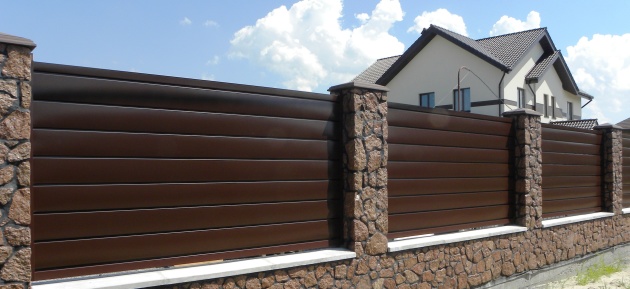
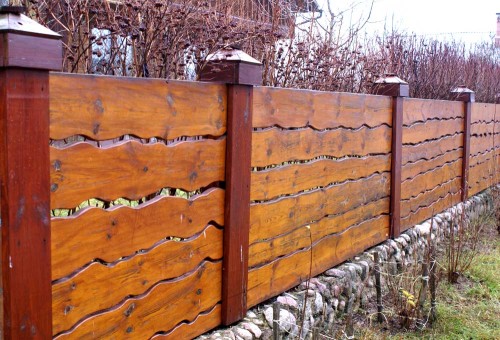
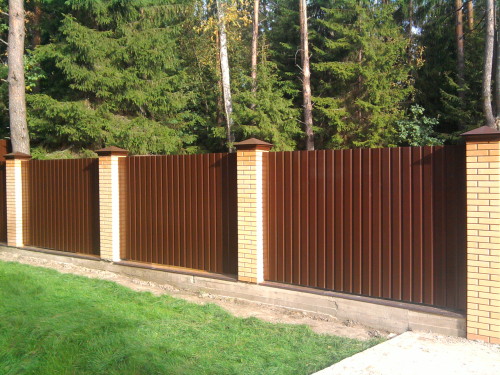
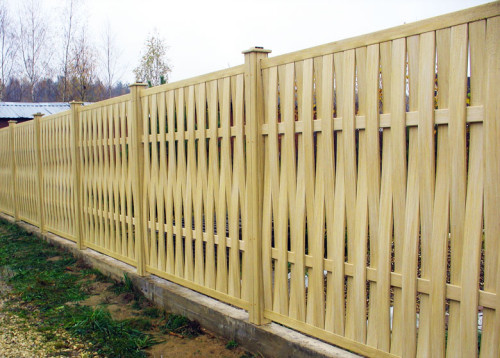
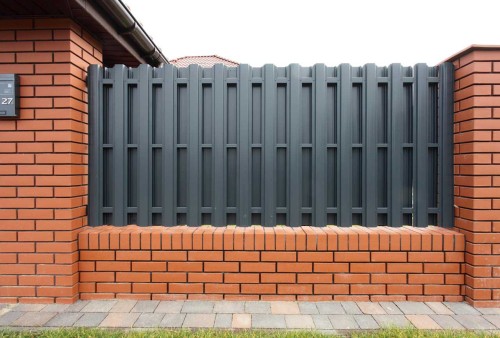
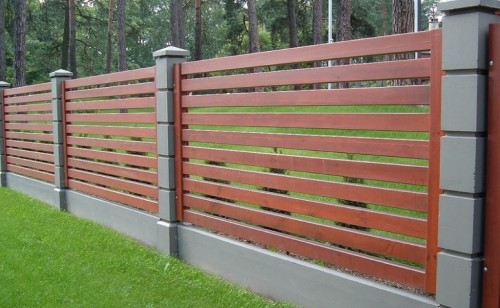
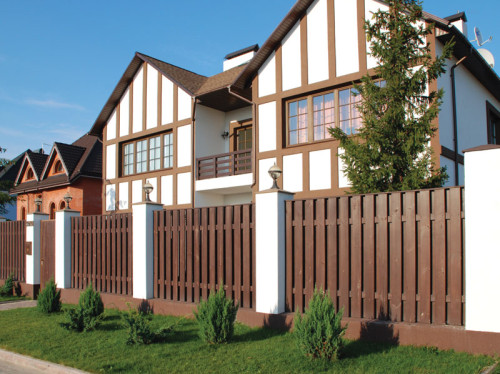
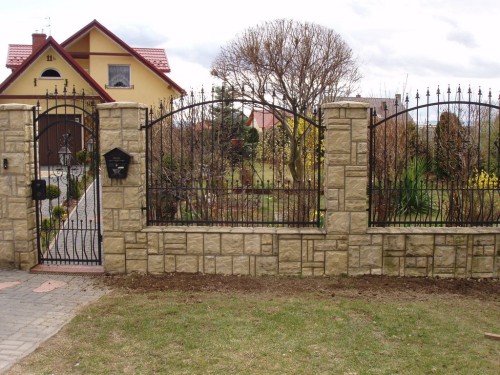
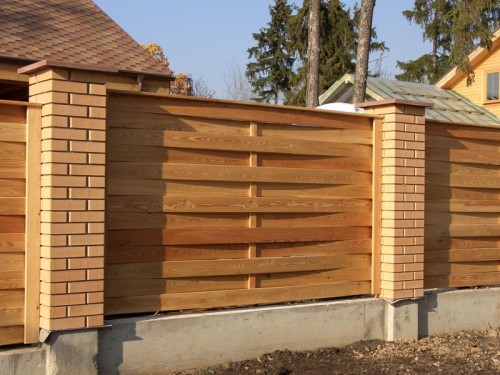
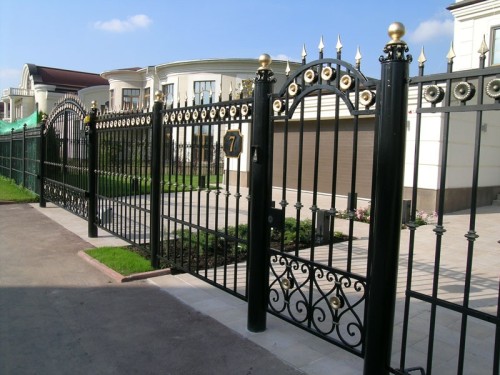
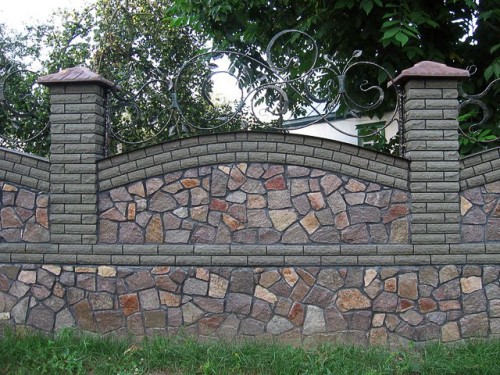

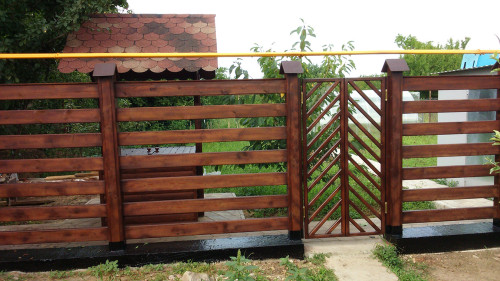
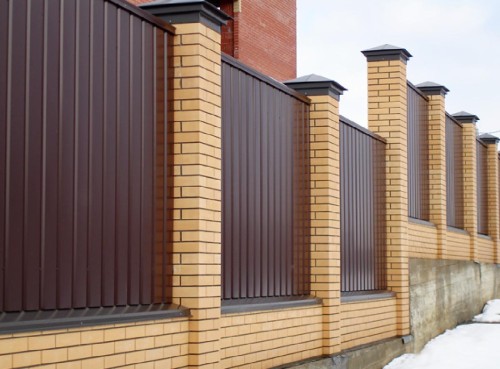
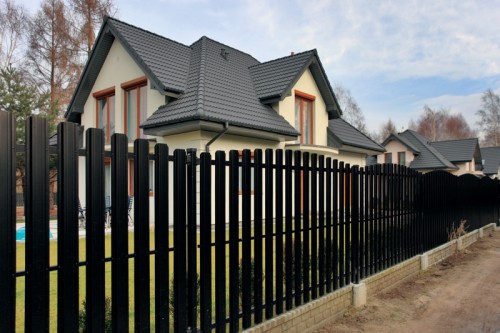

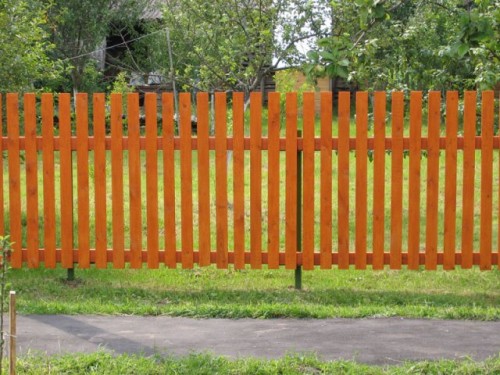
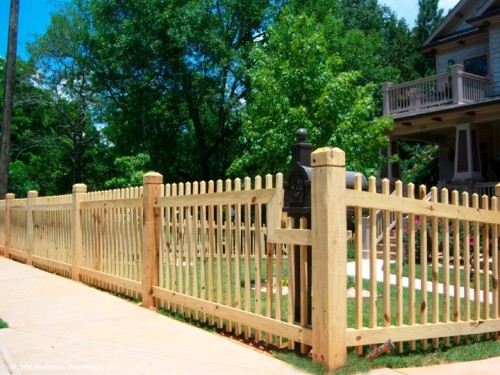
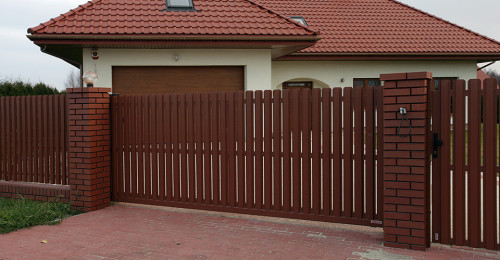
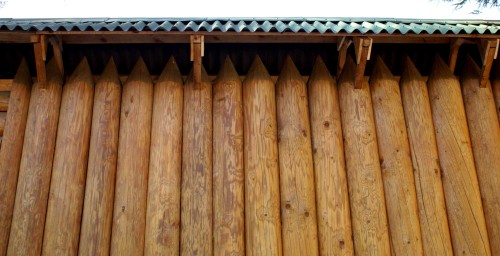
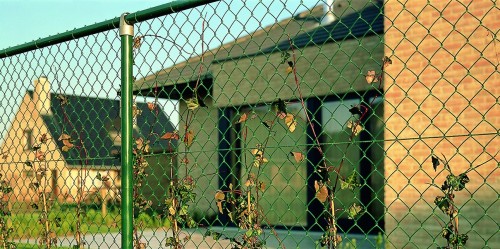
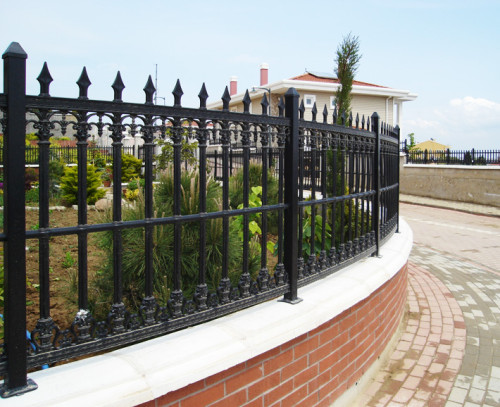
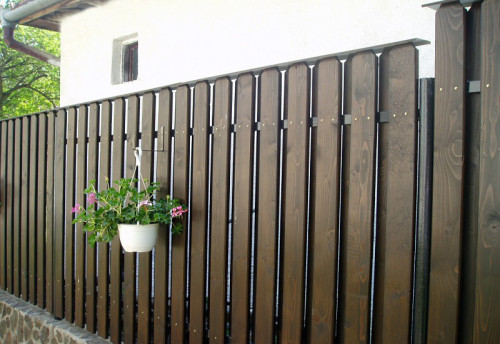
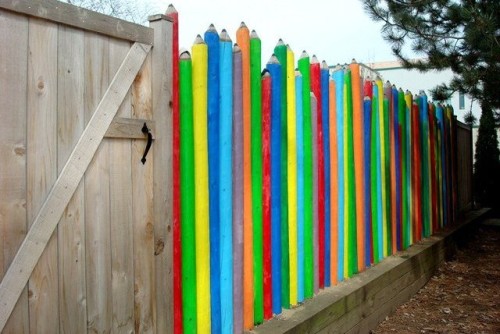

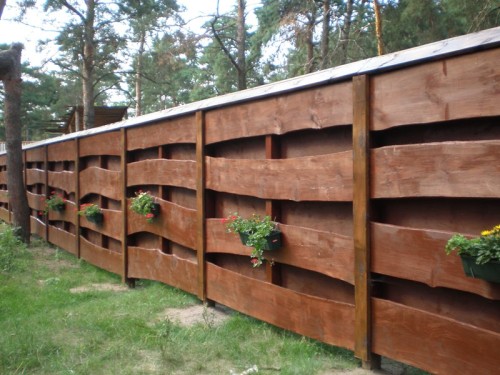
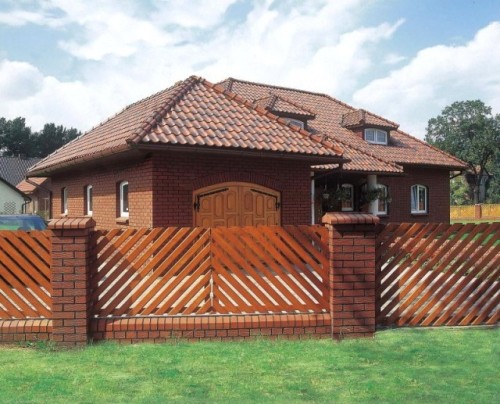
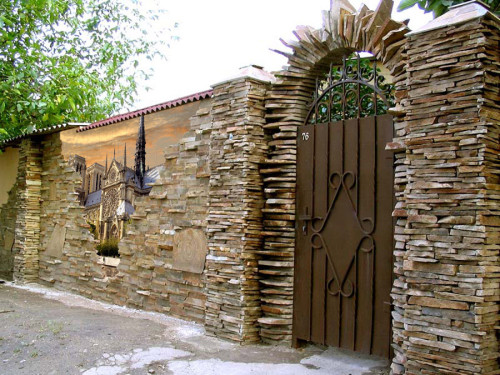
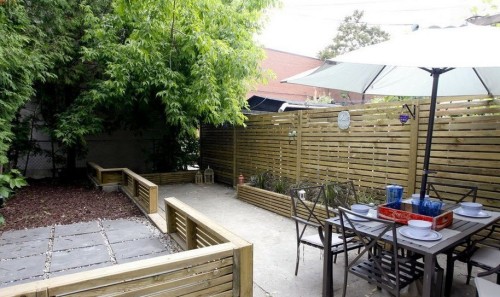
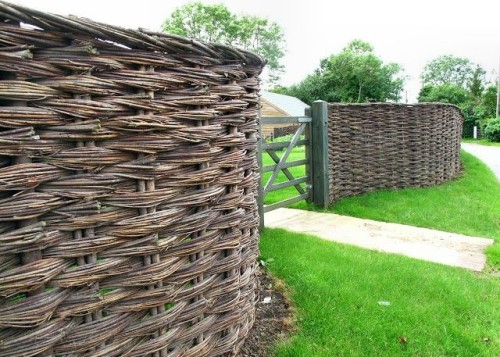
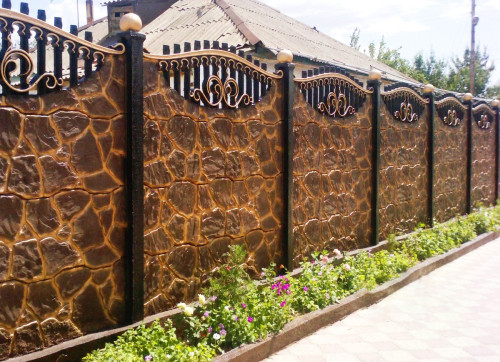






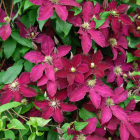

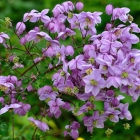
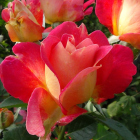
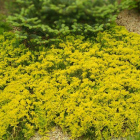

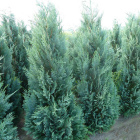
 Start a discussion ...
Start a discussion ...